Introduction
Foo Dogs, the majestic and mythical creatures standing guard at the gates of temples, palaces, and homes, have captivated the imagination of people around the world. But amidst their growing popularity in various forms of art and decor, a common question arises: Are Foo Dogs Chinese or Japanese? Let’s discover their origins, symbolism, and how they have traversed cultures, becoming a beloved symbol across Asia.
The Chinese Roots of Foo Dogs
First and foremost, Foo Dogs originated in China. Known as “Shi” in Chinese, which means lion, these mythical beasts draw their inspiration from the majestic lions of the Buddhist tradition. Lions symbolized strength, valor, and protection, considered protectors of the Dharma (Buddhist law). However, since lions are not native to China, early Chinese artisans’ depictions were based on Silk Road travelers’ descriptions and Buddhist iconography from India, where the lion’s symbolism in Buddhism first emerged.
The first Chinese Foo Dogs were sculpted during the Han Dynasty (206 BCE – 220 CE), evolving in style and symbolism through the ages. By the time of the Tang Dynasty (618–907 CE), they had become a prominent feature in Chinese imperial architecture, religious sites, and the homes of the affluent, tasked with warding off evil spirits and protecting the inhabitants within.
Foo Dogs: The Spread to Japan and Beyond
As Buddhism spread from China to Japan and other parts of Asia, so too did the symbolic protector, the Foo Dog. In Japan, known as “Komainu,” they have been a part of Shinto and Buddhist temples, shrines, and homes since at least the 8th century.Japanese Komainu share many similarities with their Chinese counterparts but have evolved distinct characteristics and styles reflective of Japanese art and religion.
The journey of Foo Dogs across Asia is a testament to the exchange of cultural and religious ideas along the Silk Road. In Korea, known as “Haetae,” and across other Buddhist-influenced cultures in Asia, people incorporate Foo Dogs, adding unique touches to the mythology and appearance of these guardian beasts.
For a deeper dive, read about Foo Dogs in Japanese Art and Culture.
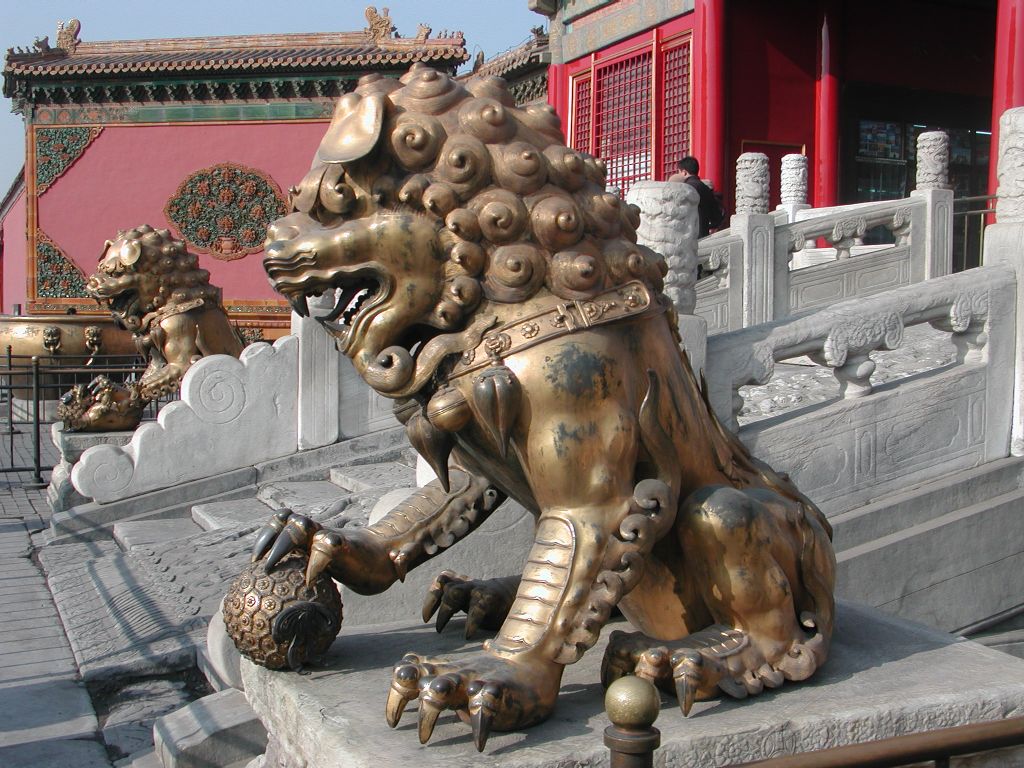
Symbolism and Significance of Foo Dogs
Foo Dogs are always presented in pairs, symbolizing the balance of yin and yang. The male lion, holding a ball under his paw, represents the yang (the universe’s masculine principle), symbolizing strength and protection. The female, holding a cub under her paw, represents the yin (the feminine principle), symbolizing nurture and care. Together, they embody a complete cosmological balance, offering both physical protection and spiritual harmony to the spaces they guard.
Typically placed at entrances, these guardians are believed to prevent negative energies from entering and maintain peace within. Their fierce expressions and muscular physiques convey power and authority, deterring evil spirits and harmful forces.
Cultural Exchange and Evolution
The evolution of Foo Dogs from Chinese to Japanese cultures and beyond is a fascinating example of cultural exchange. While Chinese in origin, Foo Dogs’ adoption into Japanese culture and other Asian traditions shows how cultural symbols evolve, gaining new meanings across contexts.
In Japan, for instance, the Komainu often incorporates elements of native Shinto beliefs, blending seamlessly with the indigenous spiritual landscape. This blend of Buddhist and Shinto elements in Japan illustrates Foo Dogs’ evolution into revered protective symbols, beyond their Buddhist origins.
Contemporary Significance
Foo Dogs remain popular in art, architecture, and home decor worldwide. Their exotic appeal and rich symbolism have won them a place in Western design as sophisticated decor items.
Moreover, the resurgence of interest in Feng Shui and Eastern spirituality in the West has further elevated the status of Foo Dogs as protectors and symbols of positive energy in homes and businesses. Their presence is believed to bring strength, prosperity, and protection against negative forces.
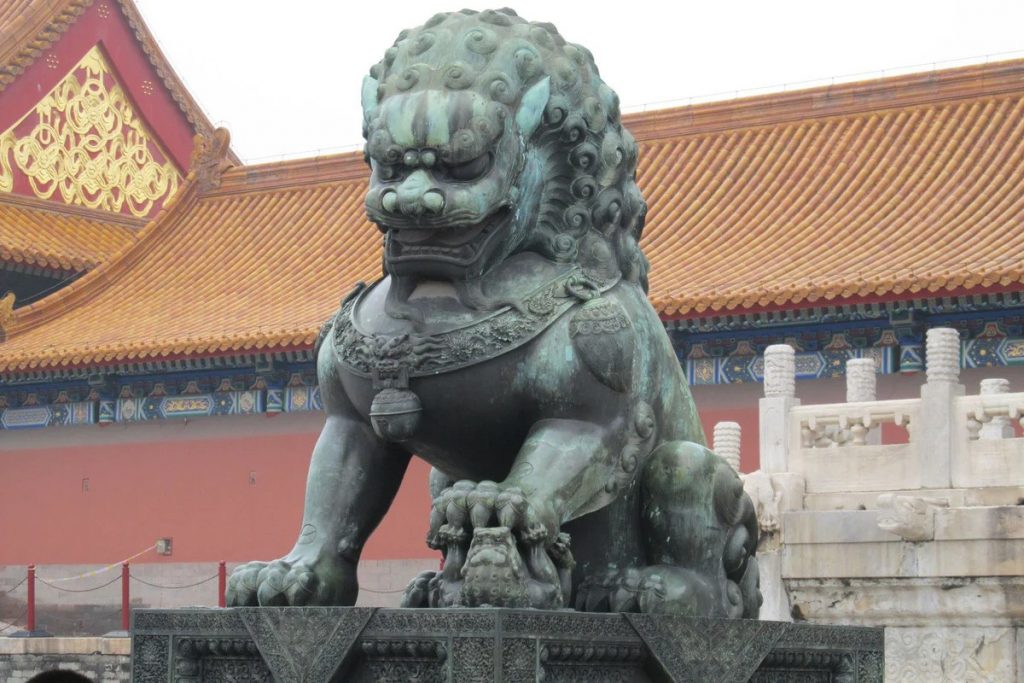
Conclusion
In conclusion, while Foo Dogs have their roots in Chinese mythology and Buddhist tradition, they have become a shared symbol across various Asian cultures, each adding its unique interpretation and style. Whether known as Shi in China, Komainu in Japan, or by other names in different cultures, these mythical guardians serve as a powerful symbol of protection, strength, and balance.
Their widespread adoption and adaptation across Asia and beyond underscore the universality of their appeal and the interconnectedness of human cultures through shared symbols and stories. So, while Foo Dogs may have originated in China, their spirit and significance have truly transcended geographical and cultural boundaries, making them a global symbol of protection and prosperity.
Read more:
- Where Can I Buy Ukiyo-e Art? Here’s where to find those rare prints
- Zen-Inspired Minimalism: Finding Harmony in Simplicity
- 10 Amazing Facts About Mount Fuji
- From Sacred Entrances to Artistic Marvels: The Enchanting World of Torii Gates in Japan
FAQ on Foo Dogs
What are Foo Dogs?
Foo Dogs, or Guardian Lions, symbolize protection in Chinese and Japanese cultures, among others in Asia. Though called dogs, they represent lions. Artisans make them in pairs for temple, palace, home, and garden entrances to repel evil spirits. Originating in China, cultures like Japan, calling them Komainu, have adopted these guardians.
Why are Foo Dogs placed at entrances?
People place Foo Dogs at entrances because they serve as guardians, protecting the space from negative energies and harmful spirits. This tradition comes from ancient Chinese beliefs that considered lions powerful protectors. Positioning these symbolic lions at gateways ensures that only positive energy enters and keeps malevolent forces at bay. This practice underscores the importance of safeguarding one’s environment and maintaining a harmonious and protected space.
What do the male and female Foo Dogs represent?
Male and female Foo Dogs represent the yin and yang balance, key to Chinese philosophy. They show how opposites in nature are interconnected. The male, with a ball under his paw, symbolizes yang: strength, protection, and the external. The female, with a cub, represents yin: nurture, care, and the internal. Together, they offer a comprehensive symbolization of balance, protection, and harmony.
How have Foo Dogs influenced art and decor worldwide?
Foo Dogs influence global art and decor, becoming a popular motif in Western design, fashion, and tattoos. Their exotic appeal and symbolism of protection appeal widely. As statement pieces, they add elegance and flair to homes and businesses. This adoption into Western culture shows a deep appreciation for Asian symbols.
Can placing Foo Dogs in your home bring good luck?
Feng Shui and Chinese beliefs say Foo Dogs in your home bring good luck. They protect from negative energies and create harmony. These guardians attract positive chi and keep away misfortune. You must place them correctly, facing outward at an entrance, for full effect. Beliefs underpin their luck-bringing power, yet their beauty and symbolism have global appeal.
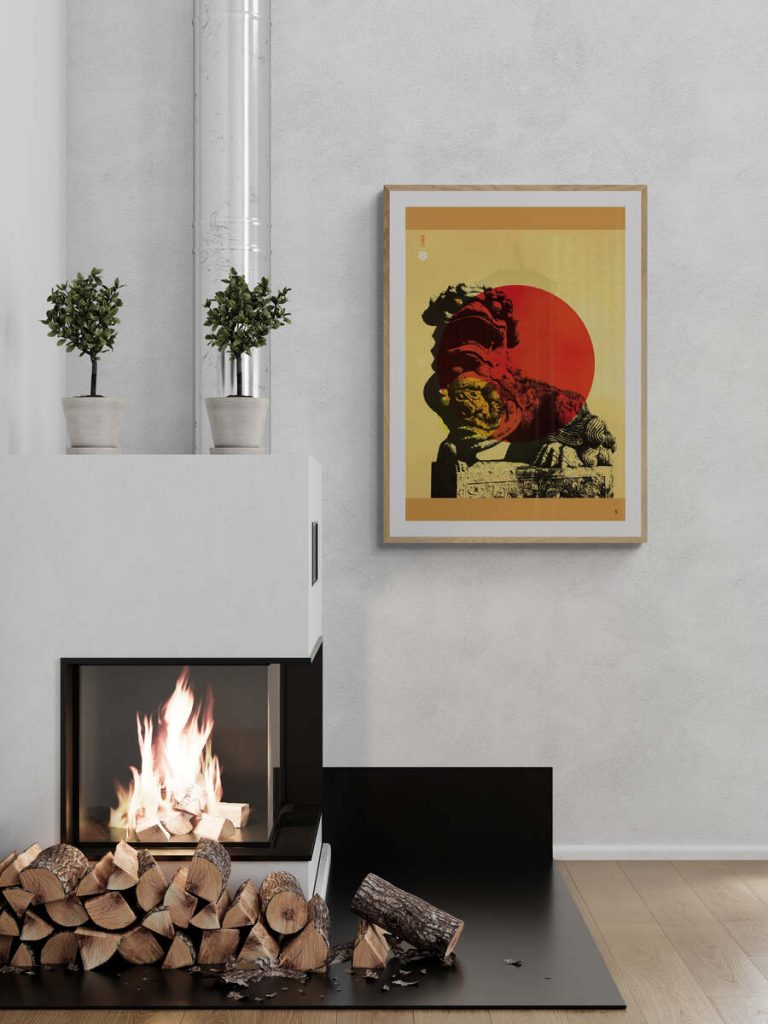
At the Art of Zen we have a wide selection of original Japanese art prints in the ukiyo-e and Japandi style. Some of our best selling work is Mount Fuji wall art and Japandi wall art.
Add some zen to your space with brilliant original art from the Art of Zen shop.
Featured image at top of Okazaki style komainu at Kotahira Shrine in Kagawa, Shikok, Japan.
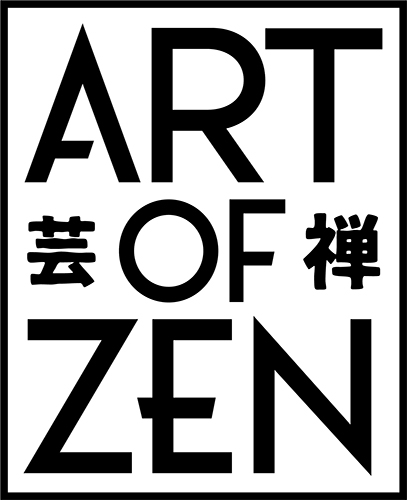

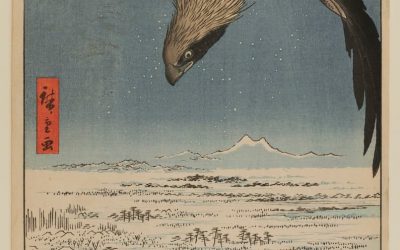

0 Comments